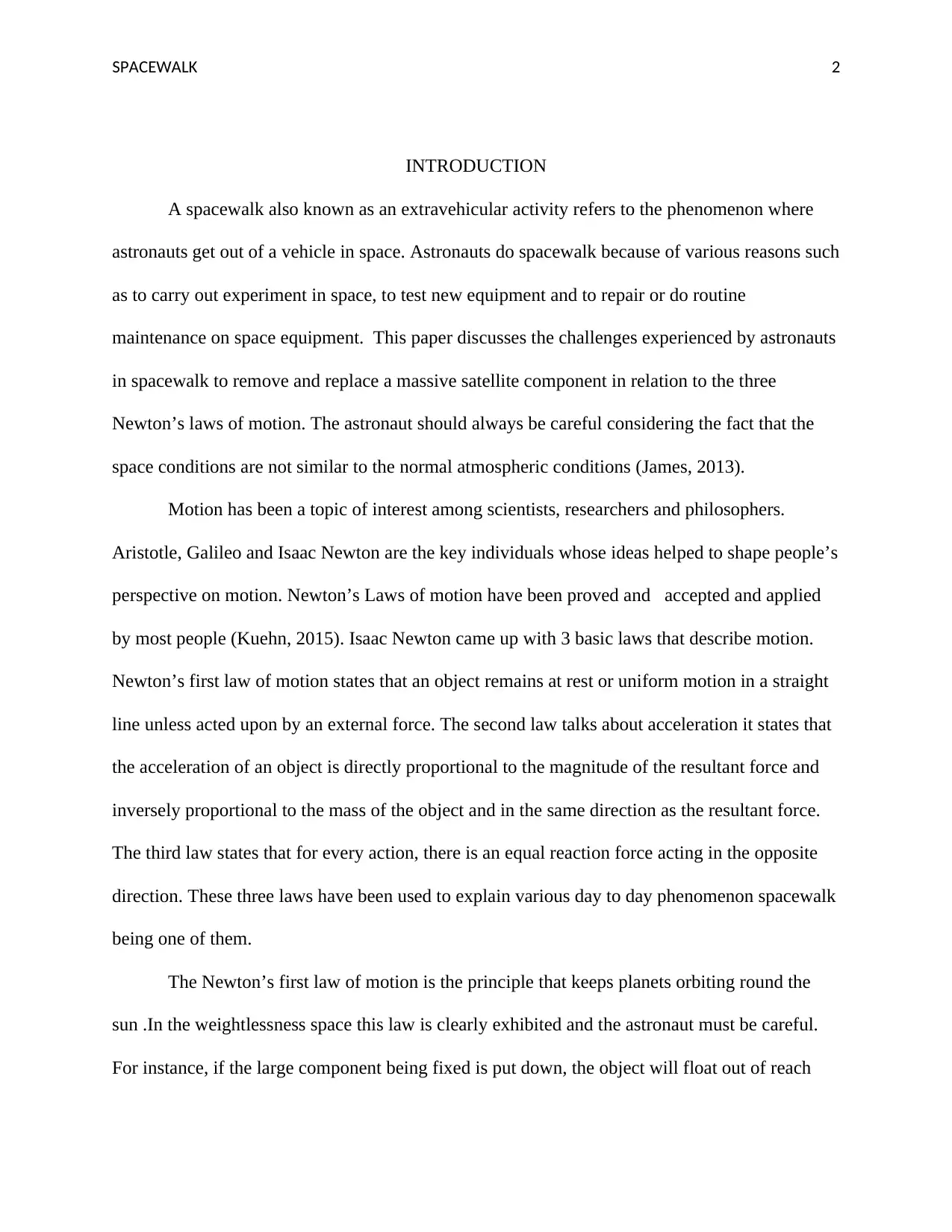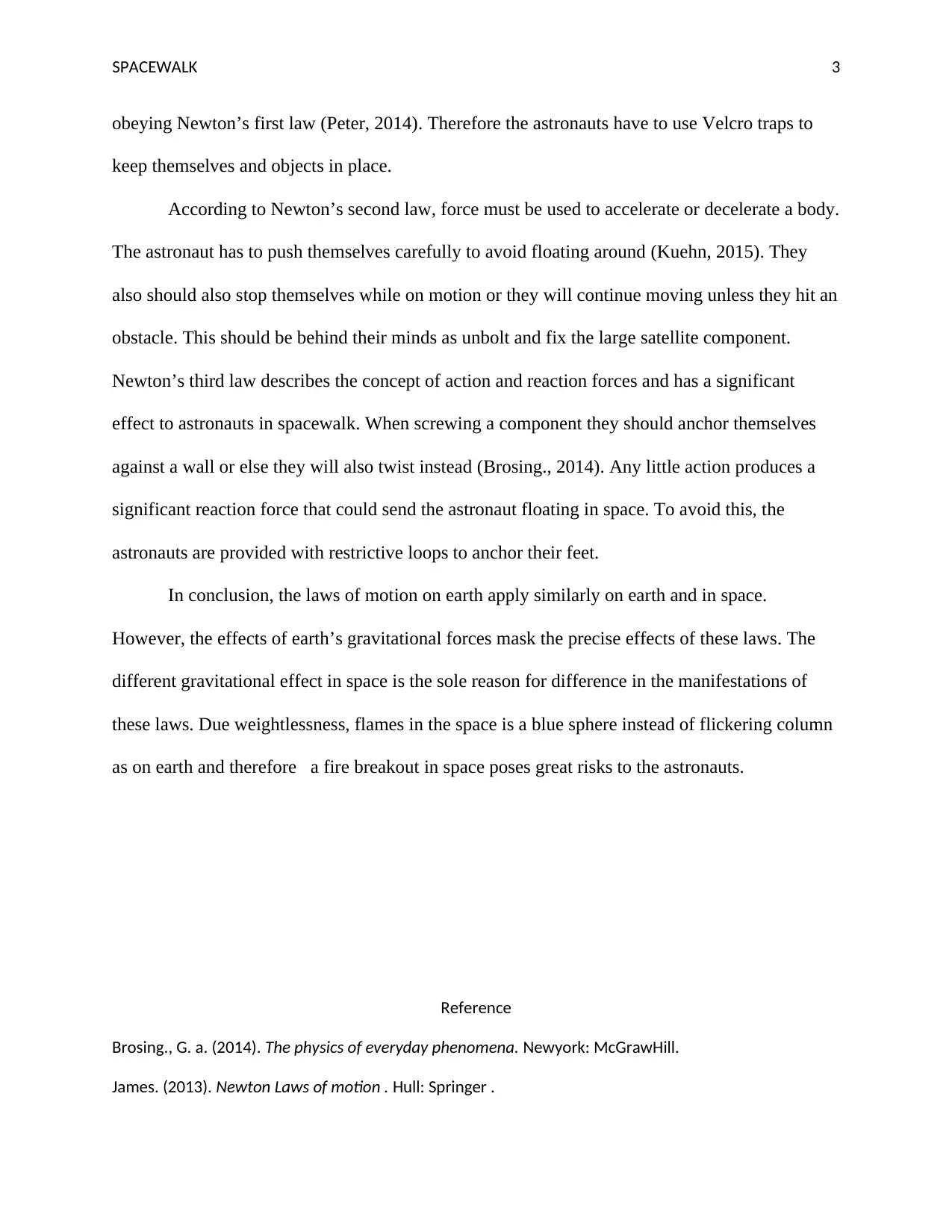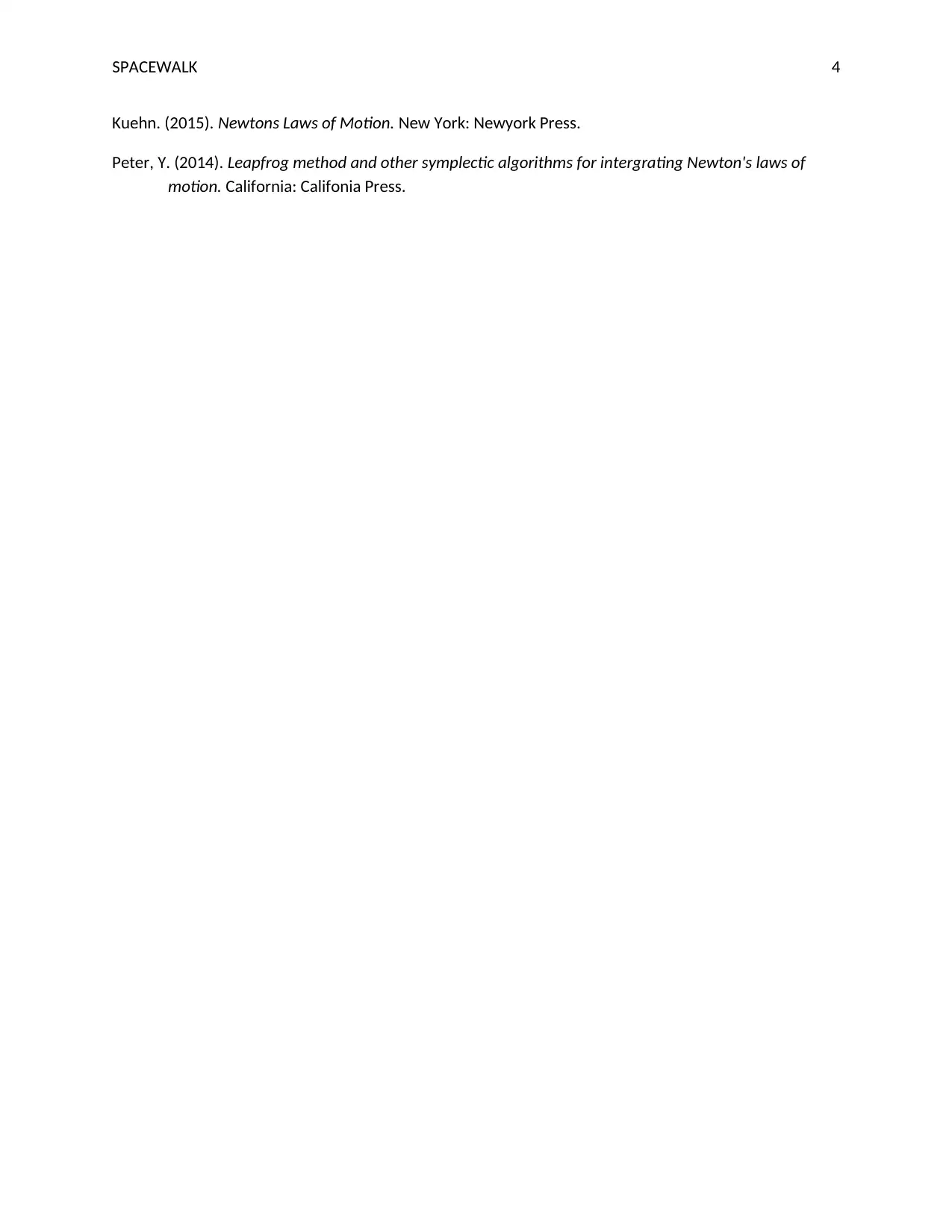Exploring Newton's Laws During Astronaut Spacewalks - Physics Module
VerifiedAdded on 2020/04/15
|4
|703
|255
Homework Assignment
AI Summary
This homework assignment explores the application of Newton's three laws of motion to astronauts conducting spacewalks. It discusses how these fundamental principles of physics manifest in a microgravity environment when astronauts undertake tasks such as removing and replacing large satellite components. The first law addresses how objects, including those handled by astronauts, remain stationary or move at constant velocity unless acted upon by external forces. This principle is crucial for handling equipment in space where there are no gravitational forces to anchor them. Newton's second law is examined through the lens of how force must be applied to change an astronaut's velocity; movements must be carefully controlled due to lack of friction and gravity. Finally, the third law's action-reaction pairs are discussed concerning the risks of unintended movement when astronauts exert force on objects or their surroundings. The assignment emphasizes that while Newton's laws hold true in space, the absence of Earth-like gravitational forces alters how these principles are experienced by astronauts.
1 out of 4






![[object Object]](/_next/static/media/star-bottom.7253800d.svg)